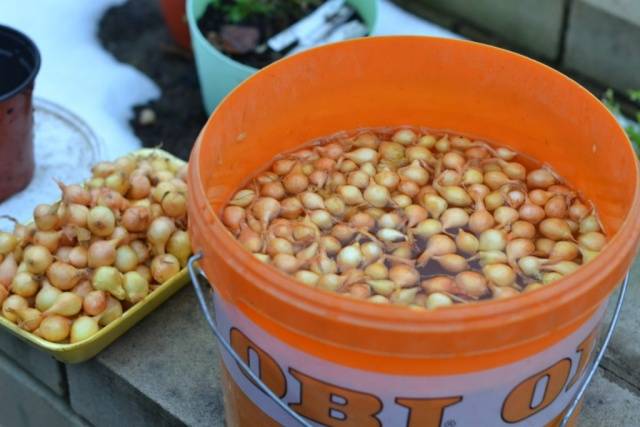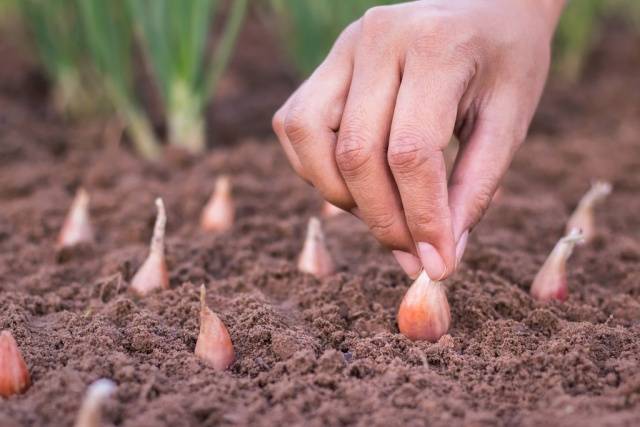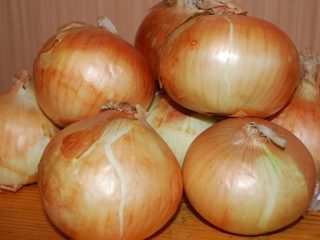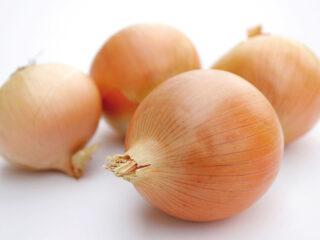Content
As you know, onions contain a lot of vitamins and phytoncides that are beneficial for the immune system; they are a natural spice and can enhance the taste and aroma of many products. Today it is difficult to imagine an ordinary kitchen without onions; they are added to almost all dishes. It is not surprising that all summer residents strive to harvest this vegetable from their own beds, especially since this crop is unpretentious and does not require complex care.
And yet, there are several tricks that help increase onion yields and improve the quality of the heads. How to plant onions correctly, and how to prepare onions collected last season for planting - this is what the article is about.
When is the best time to plant onions?
Today there are many varieties of onion crops: shallot, leek, batun, Yalta, chives, Mongolian and Indian decorative. But The most famous and widespread in Russia is the onion; this is the crop that domestic summer residents and gardeners grow on their plots. And the rules for planting onion varieties will be discussed below.
Many videos from experienced farmers indicate that onions should be planted in the fall.This statement is, in principle, true, but only for those who want to get a harvest of the greenery of this vegetable - feather.
The fact is that during the winter, a bulb planted in the ground loses all its strength, and therefore cannot grow into a larger young turnip. Such a head is only strong enough to produce early greenery; summer residents cut it off in mid-spring.
As a rule, the smallest onions are planted before winter; they cannot survive until the next season. These are heads with a diameter of up to 1 cm. In the southern regions, gardeners still sow nigella - the seeds of onions. Next year, small turnips grow from it, which can be used again for planting and produce a harvest of large heads suitable for consumption.
Self-germination of onion seeds is too painstaking a process. It is much easier and more cost-effective to buy ready-made planting material.
Most often, onions are planted in the ground in the form of small heads with a diameter of 1 to 2 cm. This is done in the spring, when the soil warms up to at least 12-15 degrees at a depth of 6-7 cm.
You can learn how to prepare onions for planting in the spring in the following sections.
Sorting bulbs for planting
First of all, onion heads purchased or grown independently in the spring need to be inspected and sorted. At this stage, all dry, empty and rotten onions are removed, leaving only healthy and strong material.
Now the turnips need to be sorted by size (if their diameter is very different):
- The smallest onions with a diameter of up to 1 cm it is necessary to plant them in the ground later than the others - they take the longest to germinate. Not only good greens can grow from such onions, but it is quite possible to grow medium-sized turnips suitable for consumption. To do this, the bulbs are planted in well-warmed soil, no earlier than mid-May, and a sufficient distance of 7-10 cm is left between them.
- Medium heads are the best planting material for growing onions for turnips. Their sizes range from 1 to 2 cm. Such onions can be stimulated: cut off the dry top with sharp scissors and peel off too much husk. This way the onion will sprout green sprouts faster and give a good harvest.
- Large bulbs with a diameter of more than 2 cm They can also be planted in the ground, but they are not grown for turnips, since such heads often produce arrows. Therefore, it is better to plant large turnips to obtain greens or seeds - nigella. But green sprouts from large onions appear earlier than from others, so they can be planted in the ground first. In most of the country this is done in early May.
The sorted bulbs are placed in separate boxes and proceed to the stage of processing planting material.
How to treat bulbs before planting in the ground
First of all, the gardener must decide for what purpose he grows onions: for greens, to obtain a turnip harvest, or to collect onion seeds from the arrows.
The method of processing planting material – small onions – depends on the answer to this question.
For growing greens
To get good green onions, as mentioned above, it is better to select the smallest onions with a diameter of up to 1 cm.Such onions need to be protected, first of all, from onion flies and other pests that specifically attack the green mass.
To do this, you can use the following remedy: dissolve a tablespoon of table salt in a liter of water. Place the bulbs in this solution and leave for 10-12 hours. After processing, the onions need to be aired and dried a little.
Preparing the bow for planting on the feather does not end there. You can stimulate the growth of green mass with complex mineral fertilizer - any composition purchased in a store and intended for all vegetable crops will do.
A tablespoon of mineral fertilizers must be dissolved in a bucket of water and the bulbs should be soaked there for 10 hours. After this processing stage, the bulbs are dried in a warm place.
Immediately before planting in the ground, onions must be disinfected to prevent fungal infections and other diseases characteristic of this crop. For these purposes, you can use weak solutions (about 1%) of potassium permarganate or copper sulfate. The onion is soaked for about 15-20 minutes.
Preparations for planting are completed; turnips can be planted in the beds.
For growing onion heads
It’s not just the green onions that interest gardeners; the lower part of the plant – the turnip – is no less important. To grow good bulbs, you need to select high-quality planting material, namely elastic, dense heads, the diameter of which is no more than 2 cm, but not less than 1 cm.
The main task of a gardener who wants to get a high yield of turnips is to prevent the formation of shoots.Onion seeds are formed in the arrows, but they greatly weaken the onion itself, which becomes unsuitable for storage and consumption.
To reduce the formation of shoots, the planting material must be provided with good heating. This is the preparation of onions for planting on turnips.
Onions are heated in the spring in several stages:
- Sorted bulbs must be left at a temperature of 20 to 25 degrees for about 15-20 days. The room must be dry and well ventilated. Attics are great for such purposes, but they may still be too cold. It’s better to place the bulbs higher; to do this, they can be distributed in an even layer on shelves, on cabinets or on other furniture in the house.
- After the specified time, the temperature must be increased sharply. To do this, the onions are placed in an environment with a temperature of 35 to 40 degrees. These could be batteries, heaters, but it is very important to ensure that the heads do not overheat - time and temperature must be strictly controlled. In such conditions, the heads must be kept for 12 hours.
- To stimulate the root system, it is necessary to use store-bought stimulants for vegetable crops. Following the manufacturer's instructions, prepare a solution and soak the onions in it.
- Dry the heads and plant the prepared onions in the ground.
Hardening onions before planting
On the Internet you can find many video and photo instructions that tell in detail how to grow onions for greens and heads. Everyone chooses their own method of preparing seed, taking into account the climate in their region, diseases common among vegetables in a particular area and other factors.
A common procedure in preparing onions is to harden the heads before planting. Preliminary hardening of the planting material will ensure increased immunity of the crop, better acclimatization of the seed after planting in the ground, and the onions will be prepared for a possible change in weather.
How to harden an onion:
- First of all you need onions soak in water whose temperature is 50 degrees. Here the onions are kept for 15 minutes, no more.
- After intensive heating, the onion is placed in cold water and kept there for the same amount of time - 15 minutes.
- Now the heads are soaked in a liquid solution of complex fertilizers for 12 hours.
- The procedure is completed by disinfecting the bulbs in a solution of manganese or copper sulfate.
Preparing the land for planting onions
The soil for planting onions must be prepared in the fall. This is primarily due to the fact that it is impossible to apply fertilizers while planting heads - this will only enhance the growth of green mass and the bolting of onions.
The culture loves loose and nutritious soil; for normal development, onions need a sufficient amount of sunlight. Therefore, you need to plant the bulbs in a well-lit area with loamy or chernozem soils.
In the fall, the soil on the site is dug up. It is recommended to add 5-6 kg of humus per square meter of land. Fresh cow manure should not be used as it may contain fungal spores and seeds. weed, which can greatly harm the bulbs.
The most suitable precursors for onions are tomatoes, potatoes, zucchini, cucumbers or pumpkin. After such plants, exactly the microelements that onions need remain in the ground.
And in the spring, after planting the heads, the beds are covered with a centimeter layer of humus. The entire complex of fertilizers ends here. You can lightly feed the planted onions with mineral components a few weeks after planting.
It must be remembered that the crop needs neutral soils, so a lime compound should be added to too acidic soil. Two weeks before planting onions in the beds, water the ground generously with a solution of copper sulfate and cover it with plastic wrap - this is necessary to disinfect the soil.
How to plant onions in spring
When both the bulbs and the soil are properly prepared, you can begin planting the onions in your area. Here you need to follow several rules:
- The bulbs need to be deepened to their size.
- The distance between the bulbs depends on their diameter. For medium-sized turnips this is 7-10 cm.
- The gap between the beds should be about 25-30 cm.
- The crop needs to be watered regularly, every two weeks.Stop watering only when turnips are growing and before harvesting.
- As a measure to combat insect pests, it is recommended to alternate the rows of onions with carrots, chamomile or calendula.
- As the turnips grow, you need to make sure that they protrude above the ground.
In order to get a high yield of onions per feather or head, you must, first of all, be able to properly prepare planting material. The recommendations from this article, as well as this video instruction, will help you do this:
























